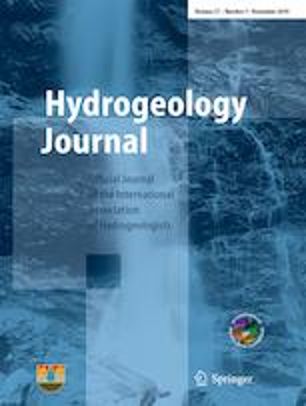| Title: | Reconciling contradictory environmental tracer ages in multi-tracer studies to characterize the aquifer and quantify deep groundwater flow: an example from the Hutton Sandstone, Great Artesian Basin, Australia |
| Authors: |
|
| Abstract: |
The effective deep recharge to the Hutton Sandstone, a major confined aquifer of the Surat Basin, Australia, has been quantified for the first time with the aid of environmental tracers. A factor of ten discrepancy was found when deriving groundwater flow velocities from applying the environmental tracers 14C and 36Cl. It was possible to reconcile these contradictory results describing the Hutton Sandstone as a dual porosity system, in which a significant part of the tracer is not only lost by radioactive decay, but also by diffusion into stagnant zones of the aquifer. The conceptual and mathematical description of this process allowed for quantification of the effective deep recharge into this aquifer. The resulting recharge value is only a small percentage (~3%) of earlier estimates using chloride mass balance. The chloride mass balance probably gives a correct shallow infiltration rate but most of that infiltration is diverted to springs and surface water nearby (“rejected recharge”). Only a small fraction of recharge finally reaches the deeper system. These results are significant for water resource quantification from groundwater in deep confined systems. The presented dual porosity reconceptualization is likely applicable to a significant number of earlier studies that apply environmental tracers to old groundwater, and indicates that those original results may actually give too small values for groundwater velocity and too large estimates of recharge. This reconceptualization may be particularly valid for systems that include old groundwater and that have limited spatial and temporal coverage of tracer data such as the Great Artesian Basin. |
| Citation: | Suckow A, Deslandes A, Raiber M, Taylor AR, Davies P, Gerber C, Leaney F (2020), Reconciling contradictory environmental tracer ages in multi-tracer studies to characterize the aquifer and quantify deep groundwater flow: an example from the Hutton Sandstone, Great Artesian Basin, Australia, Hydrogeology Journal, vol 28 (1), pp 75-87. https://doi.org/10.1007/s10040-019-02042-8 |
| Keywords: | Environmental tracer; Dual porosity; Groundwater recharge; Confined aquifer; Australia |


